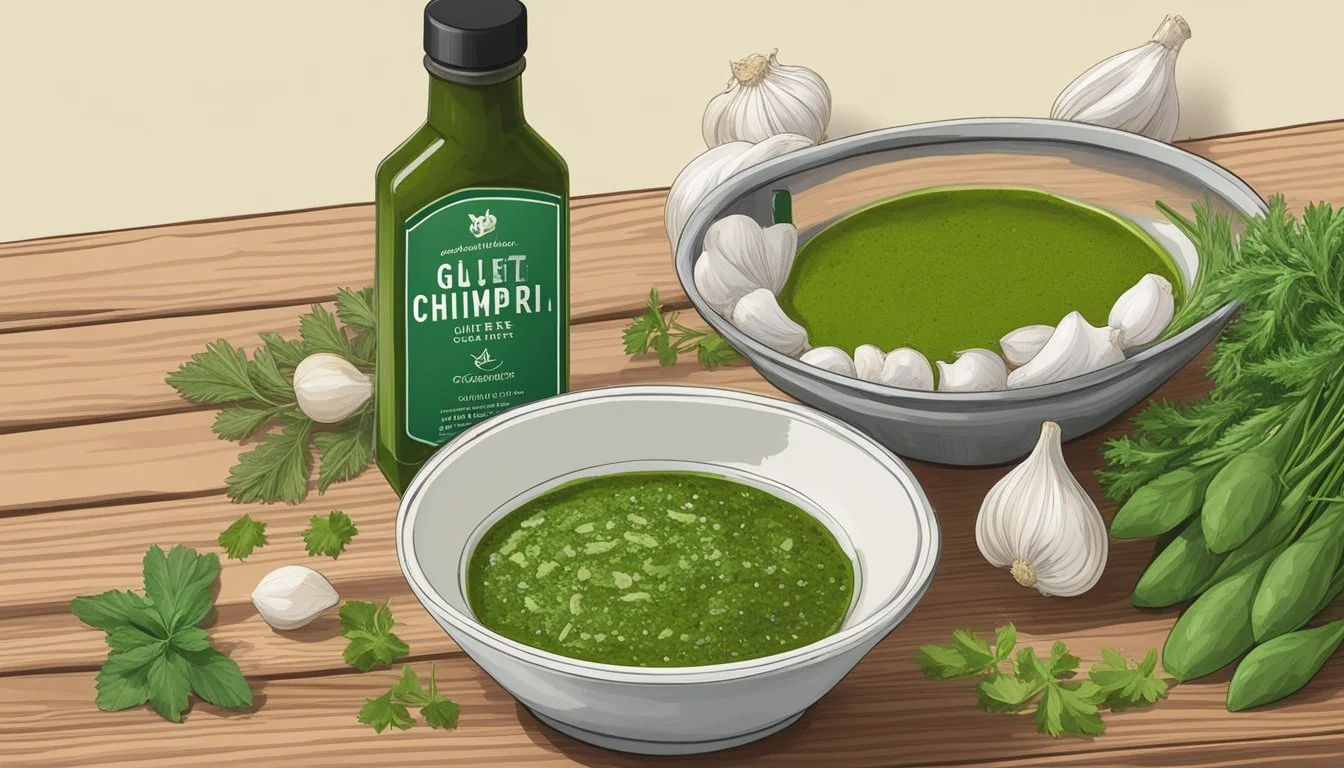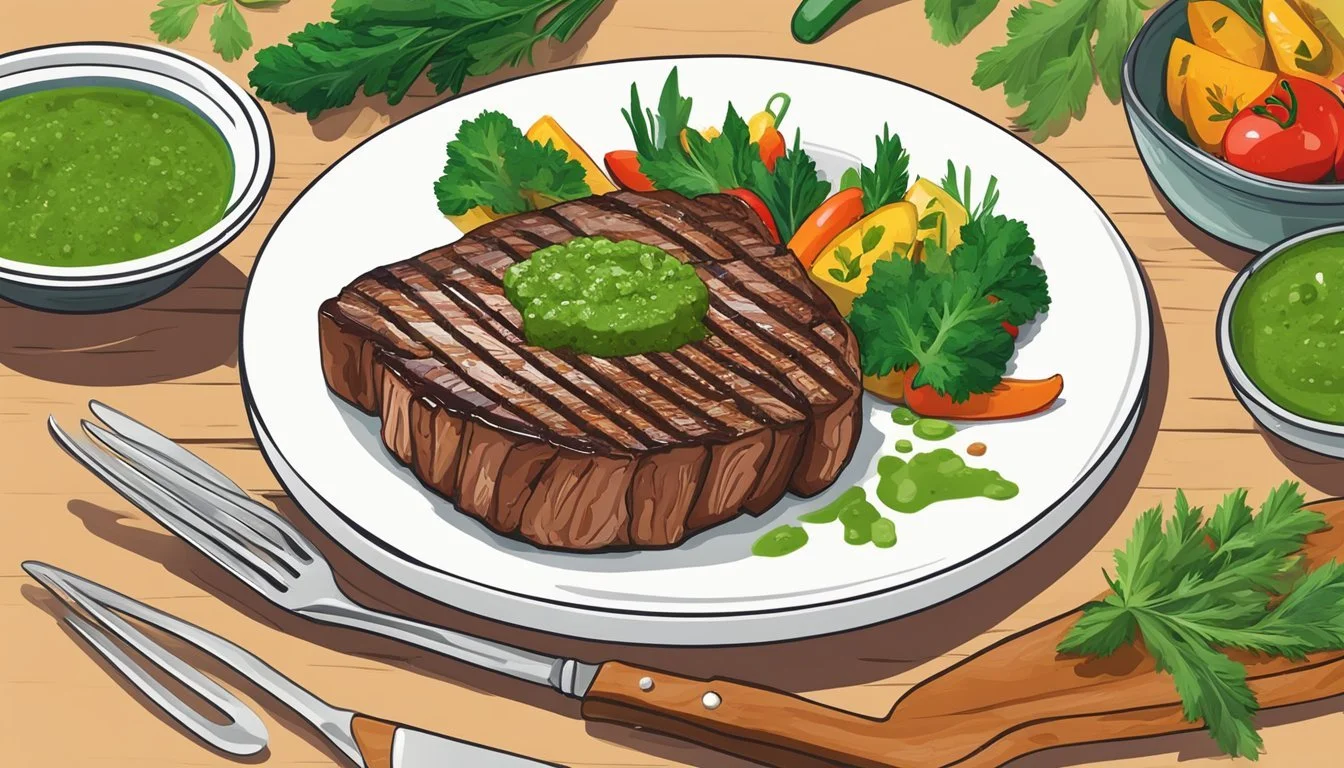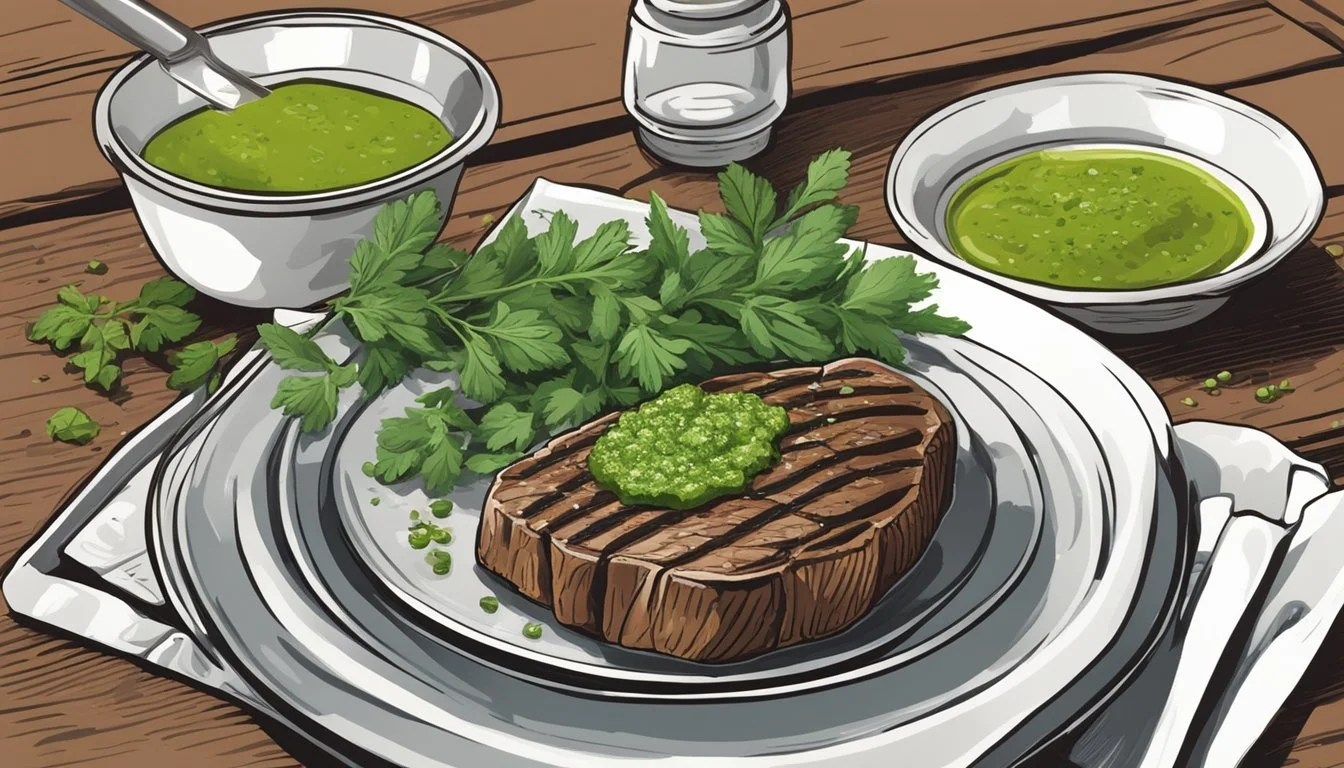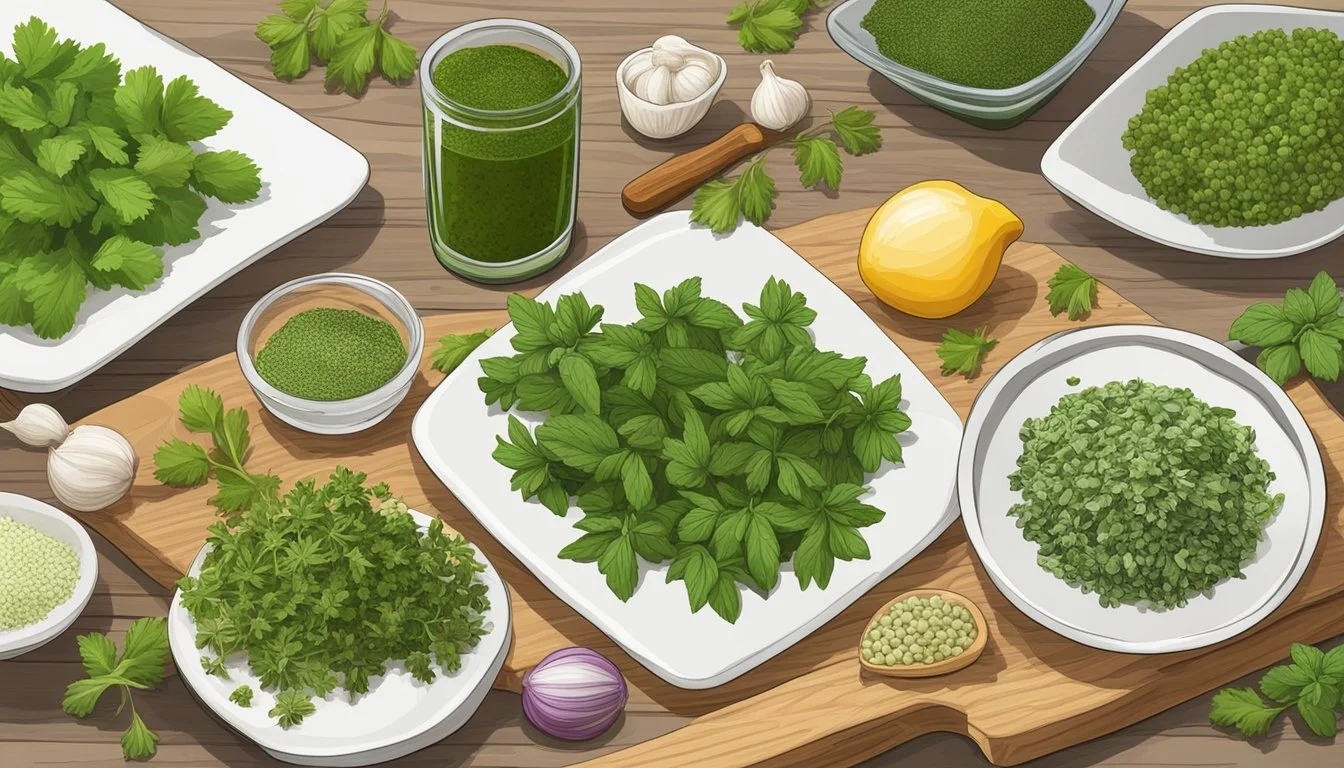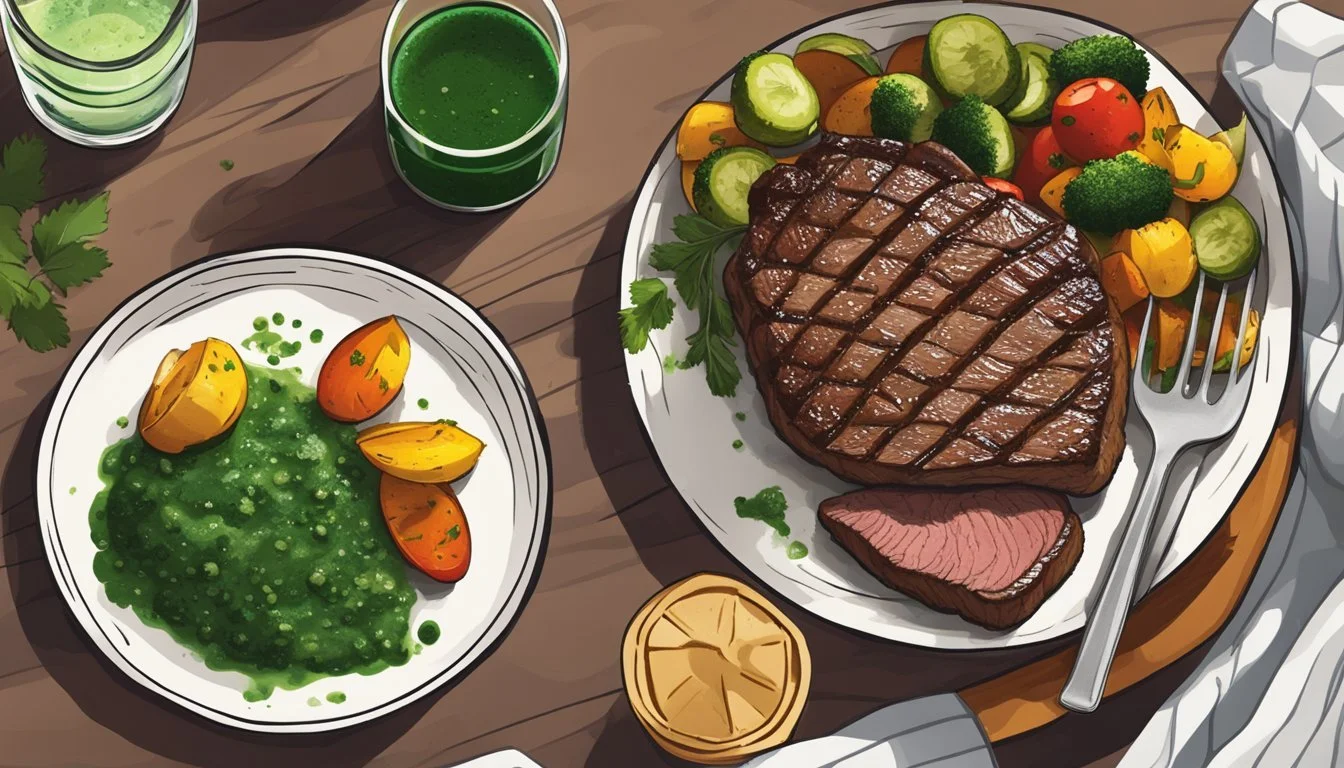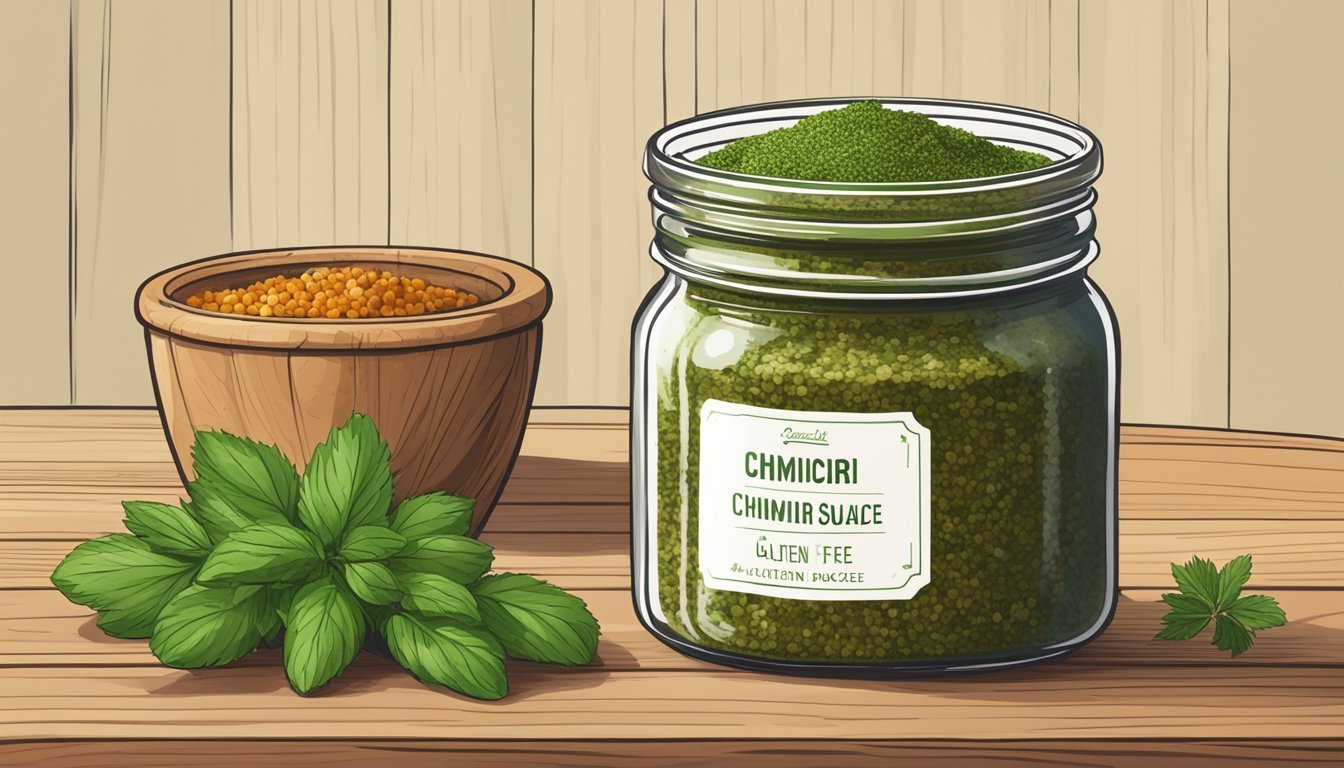Is Chimichurri Gluten-Free?
Unveiling the Facts
Chimichurri, the vibrant and herby sauce hailing from Argentina, is traditionally made from ingredients that do not contain gluten. The zesty blend of parsley, garlic, vinegar, and olive oil, combined with various spices, makes it a go-to condiment for those adhering to a gluten-free diet. Its fresh, bold flavors provide a punch of taste to grilled meats, (What wine goes well with grilled meats?) vegetables, and even as a marinade, giving individuals with gluten sensitivities the ability to enjoy the essence of Argentinian cuisine without concern.
However, for those strictly avoiding gluten, caution is advised when purchasing pre-made chimichurri or consuming the sauce in restaurants. Commercial versions may sometimes include additives or be subject to cross-contamination during preparation, posing a risk for those with celiac disease or a heightened gluten intolerance. Therefore, reading labels for potential gluten-containing ingredients and inquiring about preparation practices is crucial to ensure the chimichurri sauce remains a safe choice.
The simplicity of chimichurri's composition lends itself well to homemade preparation, where control over ingredients eliminates the worry of inadvertent gluten exposure. Utilizing fresh ingredients and assembling the sauce at home can provide peace of mind, allowing those on a gluten-free diet to savor chimichurri's distinct and delightful flavors without concern.
Understanding Chimichurri
Chimichurri sauce is an essential element of Argentinian cuisine, cherished for its bold flavor and versatility. This section explores its rich cultural backdrop and the fundamental components that define this beloved condiment.
Origins and Cultural Significance
Chimichurri is intrinsically connected to South American culinary traditions, particularly within Argentina. Its exact origins are often debated, but it is widely acknowledged as an Argentinian creation. The sauce is traditionally paired with grilled meats and symbolizes the essence of Argentinian barbecue or "asado." Chimichurri is not only a culinary delight but is also a cultural icon that reflects the fusion of indigenous and European influences in Argentinian history.
Key Ingredients
At the core of chimichurri's vibrant taste profile are several key ingredients:
Garlic: A fundamental component, garlic adds a pungent and spicy depth.
Oil: Typically olive oil, it serves as the base that carries the flavors and adds smoothness.
Vinegar: It provides a sharp tanginess that balances the sauce's richness.
Herbs transform chimichurri into the green sauce it is widely recognized as:
Parsley: Often the primary herb, it offers a fresh and slightly peppery taste.
Cilantro: Optional in traditional recipes, cilantro can be included for an extra zest.
Oregano: Either fresh or dried, oregano infuses an earthy and slightly bitter undertone.
Additional elements like lemon juice may be incorporated to enhance the sauce's bright and acidic character. Though these ingredients form the foundation of chimichurri, regional variations and personal adjustments are common, allowing individual interpretation within the bounds of tradition.
Gluten-Free Diets
When discussing gluten-free diets, it's crucial to understand what gluten is and the potential health benefits of eliminating it from one's diet, especially for those with gluten-related disorders.
What is Gluten?
Gluten refers to a group of proteins found in wheat, barley, rye, and triticale. It acts as a glue, holding foods together and giving them a chewy texture. Gluten is present in many common food items such as bread, pasta, and cereal. While gluten is safe for most people, it can cause health issues for individuals with celiac disease, non-celiac gluten sensitivity, or a wheat allergy.
Benefits of Being Gluten-Free
Choosing a gluten-free diet often leads to consuming more whole and unprocessed foods, such as fruits, vegetables, legumes, and lean meats. These natural food sources are high in essential nutrients like vitamins, minerals, fiber, and antioxidants. People on a gluten-free diet may experience an improvement in digestive health and a reduction in inflammation, especially those diagnosed with a gluten-related disorder.
Furthermore, a well-planned gluten-free diet can help with maintaining healthy calorie intake and manage sugar levels. It encourages the inclusion of nutrient-dense, naturally gluten-free grains such as quinoa, which provides protein, iron, calcium, and vitamin C.
While gluten-free does not inherently mean healthier, as some gluten-free processed foods can be high in calories and saturated fats, a mindful approach can contribute to balanced nutrition. It's important to replace gluten-containing foods with nutrient-rich alternatives, not just gluten-free versions of processed foods.
Those on gluten-free dietary plans also tend to avoid most dairy products because of lactose intolerance, which can be common among individuals with celiac disease. These diets are not inherently paleo, Whole30, or keto but can overlap depending on food choices. As with any diet, the key is a balanced intake of essential nutrients, including potassium, fiber, vitamin A, and others, while keeping processed foods to a minimum.
Is Chimichurri Gluten-Free?
Chimichurri is generally gluten-free as it is traditionally made using ingredients that do not contain gluten.
Potential Sources of Gluten in Sauces
When preparing or purchasing chimichurri, it is important to consider the sources of gluten that could be present, especially for those with celiac disease or gluten sensitivity. Here's what to watch out for:
Cross-Contamination: In facilities where gluten-containing products are made, there's a risk of gluten contaminating gluten-free foods.
Added Ingredients: Some store-bought chimichurri sauces might have additives or thickeners that contain gluten.
Vinegar: Most vinegars, including apple cider vinegar and white vinegar, are gluten-free, but some malt vinegars can contain gluten.
Modified Food Starch: If used in commercial preparations, make sure it's not derived from a gluten-containing grain.
When making chimichurri at home, sticking to the basic ingredients like parsley, garlic, vinegar, olive oil, and spices, one can ensure that the sauce remains gluten-free. Always check labels when buying pre-made sauces and confirm the type of vinegar used if gluten is a concern.
Making Your Own Gluten-Free Chimichurri
Creating a homemade gluten-free chimichurri involves careful selection of ingredients, a streamlined preparation process, and an understanding of storage techniques to maintain freshness.
Selecting the Right Ingredients
When crafting a gluten-free chimichurri, the quality and purity of ingredients are paramount. It is essential to start with fresh herbs such as parsley and oregano, combined with garlic for its robust flavor. Adding red wine vinegar and lemon juice will bring a zesty acidity, and a generous pour of extra virgin olive oil provides the base of the sauce. For seasoning, kosher salt, pepper, and red pepper flakes can be adjusted to taste. Verify that all purchased ingredients have not been processed or packaged in a facility that also handles gluten-containing products to avoid cross-contamination.
Step-by-Step Preparation Guide
Chop the Garlic and Herbs: Finely mince the garlic and chop the fresh herbs by hand, ensuring they are thoroughly cleaned and free from gluten contamination.
Combine the Ingredients: In a food processor or blender, combine the chopped garlic and herbs with the red wine vinegar, lemon juice, and spices.
Blend the Mixture: Pulse the mixture until the ingredients become evenly incorporated but still retain some texture.
Emulsify with Olive Oil: Slowly drizzle in the olive oil while the processor is running to create a stable emulsion and achieve a cohesive sauce.
Adjust Seasoning: Taste and adjust the salt, pepper, and red pepper flakes according to preference.
Storage and Shelf Life
For maximum freshness, the chimichurri should be transferred into an airtight container and stored in the fridge. Properly refrigerated, it can last for up to 10 days. If a larger batch is made, portioning and freezing the sauce can extend its shelf life. Ensure it's stored in suitable containers or freezer bags and can be kept in the freezer for up to a few months. To use, simply thaw overnight in the refrigerator before serving.
Using Chimichurri in Cooking
Chimichurri, the vibrant and herbaceous sauce, commonly finds its place in kitchens as a marinade and condiment. It imparts robust flavors to various dishes and is traditionally paired with grilled meats, but its versatility extends far beyond.
Chimichurri as a Marinade
In its role as a marinade, chimichurri infuses meat with its distinctive herby and garlicky profile. One simply needs to coat their choice of protein—steak, chicken, or even fish and shrimp—in the sauce and allow it to rest. For instance, a steak may be marinated for a few hours or overnight to maximize flavor absorption. Vegetarian options are not left out; tofu and vegetables can be similarly flavored before cooking.
Meat: Marinate for 3 hours to overnight.
Chicken/Fish: Marinate for 30 minutes to 2 hours.
Tofu/Veggies: Marinate for at least 30 minutes.
Chimichurri as a Condiment
Chimichurri shines as a condiment due to its fresh taste and simplicity in preparation with a food processor. The sauce can be drizzled over grilled meats, like a tender flank steak, or used to elevate roasted veggies and salads. Its dynamic character can complement a range of cuisines, enhancing even the simplicity of pasta dishes. For a vegan twist, it pairs wonderfully with plant-based foods, adding a burst of flavor to nutty grains or legumes.
Serving Suggestions:
Grilled Meats: Serve as a topping or side sauce.
Roasted Veggies: Drizzle or toss with chimichurri before serving.
Pasta/Salad: Mix in chimichurri to taste for added zest.
Chimichurri's gluten-free nature appeals to a broad range of dietary preferences, reinforcing its role as a staple in inclusive cooking.
Health Benefits and Nutritional Profile
Chimichurri sauce, traditionally a blend of herbs, olive oil, and vinegar, is renowned for its vibrant flavor and health benefits. This green sauce from Argentina provides a nutritious addition to meals, with its ingredients contributing to its low calorie yet nutrient-dense profile.
Macronutrient Breakdown
Calories: Chimichurri is low in calories, with the majority coming from the olive oil it contains.
Fat: Olive oil, a key ingredient, is high in monounsaturated fats, known for their beneficial effects on heart health.
Protein: Minimal; this sauce is not a significant source of protein.
Sugar: Naturally low in sugars, it does not increase calorie content significantly.
Fiber: Herbs contribute a small amount of dietary fiber.
Micronutrients and Healthful Compounds
Vitamin C: Parsley, a primary ingredient, is rich in vitamin C, important for immune function and skin health.
Vitamin A: Also provided by parsley, it supports vision and the immune system.
Potassium: Herbs like parsley and cilantro contribute to the potassium content, which is crucial for heart and muscle function.
Calcium: Present in small amounts, calcium is vital for bone health.
Iron: Parsley is a good source of iron, which is necessary for transporting oxygen in the blood.
Antioxidants: The herbs, particularly cilantro, contain antioxidants that can help protect the body against oxidative stress.
Chimichurri and Dietary Restrictions
Chimichurri sauce, traditionally made from fresh herbs and other natural ingredients, potentially aligns with various dietary restrictions. However, one must remain vigilant, especially concerning possible cross-contamination or added ingredients that could affect the sauce's dietary compatibility.
Adapting Chimichurri for Different Diets
Gluten-free: Chimichurri's basic components—parsley, garlic, vinegar, and olive oil—are all inherently gluten-free. Those with celiac disease or gluten sensitivity can usually enjoy chimichurri safely. Nevertheless, it's crucial to check for potential gluten contamination in store-bought versions or cross-contamination in restaurants.
Vegan: This herbaceous sauce is naturally vegan, utilizing plant-based ingredients without any animal products.
Dairy-free: Chimichurri does not contain dairy, making it suitable for lactose-intolerant individuals and others following a dairy-free lifestyle.
Paleo & Whole30: Focusing on whole, unprocessed foods, both paleo and Whole30 diets embrace chimichurri as long as the oil used is compliant with their guidelines—such as olive oil.
Keto: While chimichurri can fit into a ketogenic diet, attention should be paid to the overall carb content and serving size due to the presence of vinegar and possible added sweeteners in non-traditional recipes.
When preparing chimichurri, it is advisable to make it at home to ensure it adheres to personal dietary needs. Homemade preparation allows for complete control over ingredient selection and assurance against any non-compliant additives.
Serving Suggestions and Pairings
Chimichurri sauce, a herby and tangy accompaniment originally from Argentina, complements a variety of dishes, enhancing flavors without overwhelming the main ingredients. It's traditionally gluten-free, making it a suitable choice for those with gluten sensitivities.
Meats and Seafood
Steak: Grilled or pan-seared steak is a classic pairing with chimichurri. The fresh, acidic sauce cuts through the richness of the meat.
Steak Type Suggestion Ribeye Grill and serve with chimichurri Flank Marinate and pan-sear
Chicken: A leaner option like grilled chicken breast can be elevated with a generous spoonful of chimichurri.
Chicken Preparation Serving Grilled Top with chimichurri Roast Serve sauce on the side
Seafood: For seafood lovers, chimichurri drizzled over grilled shrimp or a white fish (What wine goes well with white fish?) fillet adds a burst of freshness.
Seafood Type Serving Shrimp Drizzle with chimichurri White Fish Accompany with the sauce
Vegetarian and Vegan Options
Salads: Chimichurri can dress up any simple green salad or can be used as a marinade for a robust, nutrient-packed grain salad.
Salad Type Serving Green Drizzle over the top Grain Toss with chimichurri
Pasta: Even though pasta is not a traditional pairing, one can opt for a gluten-free pasta tossed in chimichurri for a herby twist.
Pasta Type Suggestion Gluten-Free Pasta Toss with chimichurri sauce
Potatoes: Roasted or grilled potatoes become a lively side dish when mixed with chimichurri.
Vegan Proteins: Tofu or tempeh (What wine goes well with tempeh?) can be marinated in chimichurri before cooking to infuse them with herbaceous flavors.
Vegan Protein Preparation Tofu Marinate and pan-sear Tempeh Grill and top with sauce
In each pairing, chimichurri sauce serves as a vibrant addition that complements the main ingredients without containing gluten, supporting a variety of dietary preferences.
Common FAQs About Chimichurri
Understanding whether chimichurri aligns with gluten-free dietary needs often leads to common inquiries. This section addresses these frequent questions with straightforward, clear information.
Is All Chimichurri Gluten-Free?
Traditionally, chimichurri, an Argentine sauce composed of parsley, garlic, vinegar, oil, and spices like chili pepper or red pepper, is gluten-free. However, certain factors can introduce gluten:
Cross-Contamination: When chimichurri is prepared in a facility that also processes wheat or gluten-containing ingredients, the risk of gluten cross-contamination increases.
Added Ingredients: Pre-made chimichurri may have additional components like flavor enhancers or preservatives that contain gluten.
How to Identify Gluten in Chimichurri Labels
When purchasing chimichurri, it's crucial for individuals with gluten sensitivities to scrutinize labels for hidden sources of gluten. Here are specific steps they can take:
Look for a Gluten-Free Certification: Labels with a certified gluten-free mark are the safest choices.
Read Ingredients Lists Carefully: Hidden gluten sources may include terms like "hydrolyzed wheat protein" or "malt," which can be derived from barley.
Common Gluten-Containing Ingredients to Avoid Hydrolyzed Vegetable Protein (if sourced from wheat) Malt Vinegar Soy Sauce (unless labeled gluten-free) Modified Food Starch (unless specified as gluten-free)
As a preventive measure, individuals can opt to make chimichurri at home, allowing them to control the ingredients and minimize the risk of gluten contamination.
Creative Ways to Enhance Dishes with Chimichurri
Chimichurri sauce offers a vibrant flavor that can take a dish from ordinary to extraordinary. This Argentinian condiment can be utilized in more ways than just as a traditional steak topping.
Beyond Traditional Uses
One can explore the versatility of chimichurri as a marinade for proteins. Its acidic components such as vinegar and lemon juice tenderize, while herbs like parsley and cilantro bring fresh notes to the palette. For vegetables, it offers a zing that is hard to match, transforming grilled or roasted vegetables (What wine goes well with roasted vegetables?) into a standout dish. As a Condiment for sandwiches and burgers, chimichurri adds a gourmet touch with its herby and garlicky profile.
Innovative Chimichurri Fusion Ideas
Chefs are incorporating chimichurri into fusion dishes that marry different culinary traditions. Experiment with chimichurri as a dip for Asian-inspired appetizers like spring rolls or dumplings, blending South American zest with Eastern flavors. On social media platforms like Instagram and Pinterest, food enthusiasts showcase chimichurri as a drizzle on artisanal pizzas, bringing an unanticipated layer of flavor that enhances the traditional pizza experience. With a dollop on top of a hearty bowl of grains and roasted vegetables, one can present an aesthetically pleasing bowl that's as delicious as it is photogenic.
Tips for Buying and Storing Chimichurri
When selecting chimichurri sauce, one must focus on quality ingredients and proper storage methods to maintain its freshness and gluten-free integrity.
Selecting Quality Commercial Chimichurri
When purchasing commercial chimichurri, it is imperative to read the label carefully to ensure the product is gluten-free. Quality chimichurri should feature olive oil and vinegar as base ingredients. Moreover, the inclusion of sea salt can indicate a commitment to traditional flavoring, though one should be mindful of the sodium content for dietary considerations.
Preservation Techniques
To maximize shelf life, one should store chimichurri in the fridge within an airtight container. This inhibits oxidation and preserves the sauce’s vibrant flavor and consistency for up to one week. For longer storage, freezing the sauce in ice cube trays followed by transferring to a freezer bag allows for extended preservation and easy portioning.
Chimichurri Around the World
Chimichurri has transcended its Argentinian roots to become a global sensation, adapting to varying international palates while its presence on social media platforms further seals its worldwide appeal.
Variations in Different Cuisines
In South America, chimichurri remains a cultural staple, with each region adding its unique twist to this classic sauce. Traditional Argentinian chimichurri consists of parsley, garlic, vinegar, and olive oil, but countries like Uruguay have their own versions that may include different herbs such as cilantro or oregano. As it has traveled north, American adaptations sometimes incorporate ingredients like cilantro in place of or in addition to the classic oregano, catering to a diverse audience.
Internationally, chimichurri has been embraced by chefs and home cooks alike, finding its way into various dishes beyond grilled meat. It is often used as a marinade, a dipping sauce, or even a flavoring for vegetables, showcasing its versatility across different cuisines.
Chimichurri's Popularity on Social Media
Chimichurri's bright green hue and vibrant flavor profile have made it a star on platforms like Instagram and Pinterest. Visual and appealing images of the sauce garnishing a multitude of dishes regularly circulate, earning likes and shares from food enthusiasts across the globe. These platforms have created communities where recipes are exchanged, and creative variations are welcomed, expanding chimichurri's reach well beyond its origins. The hashtag #chimichurri reveals a plethora of posts from professional chefs to culinary hobbyists, all showcasing their love for this Argentinian import.
Conclusion
Chimichurri is a vibrant, herbal condiment traditionally made with fresh parsley, garlic, vinegar, olive oil, and a blend of spices. Its bright flavor comes from these fresh, simple ingredients that are naturally gluten-free. The sauce can serve as a health-conscious addition to various dishes, offering a punch of flavor without the addition of gluten.
When individuals with gluten sensitivities consider incorporating chimichurri into their diet, it’s imperative they consider the source. Homemade chimichurri can be controlled for gluten exposure. However, care should be taken with store-bought or restaurant variants, as these may harbor hidden gluten due to cross-contamination or additional flavorings.
For those preparing chimichurri at home, it's recommended to:
Read labels of any pre-packaged ingredients for hidden gluten
Ensure all utensils and surfaces are free from gluten residues
Verify spice mixes are labeled gluten-free as spices may be processed with gluten-containing foods
By cautiously selecting ingredients and asking the right questions when dining out, individuals seeking a gluten-free lifestyle can confidently enjoy the healthy and robust flavors of chimichurri.


